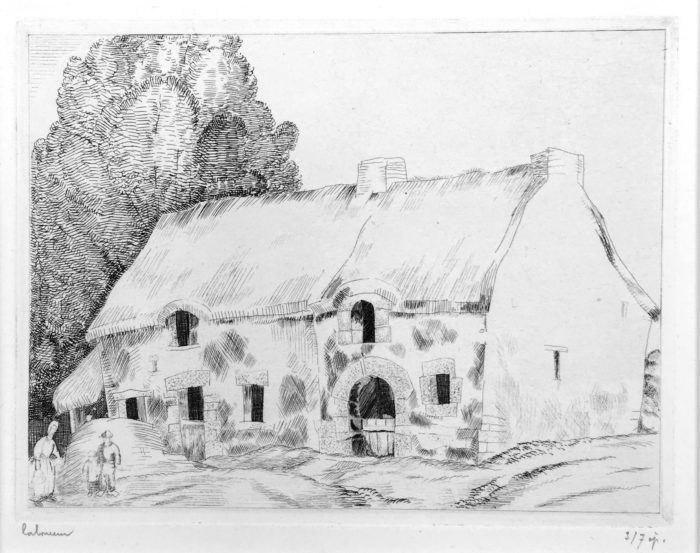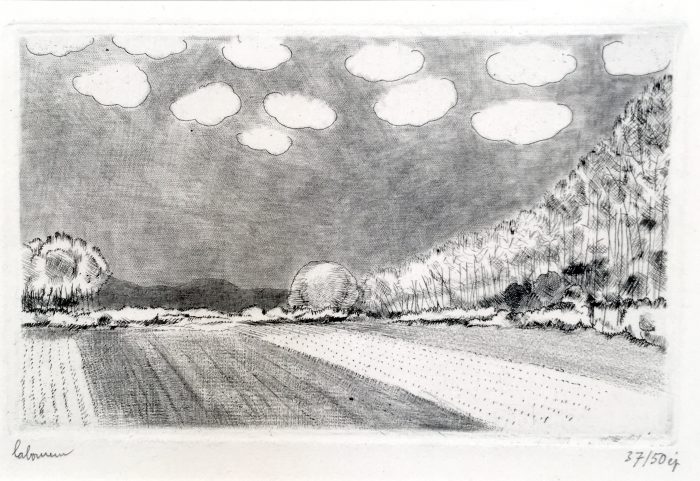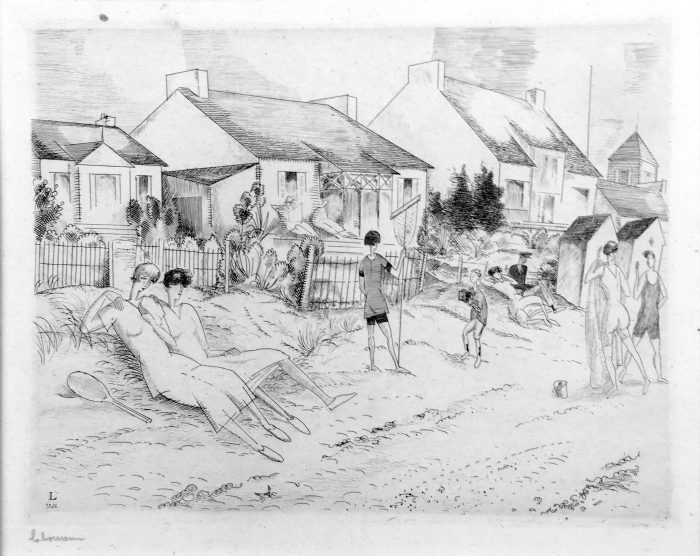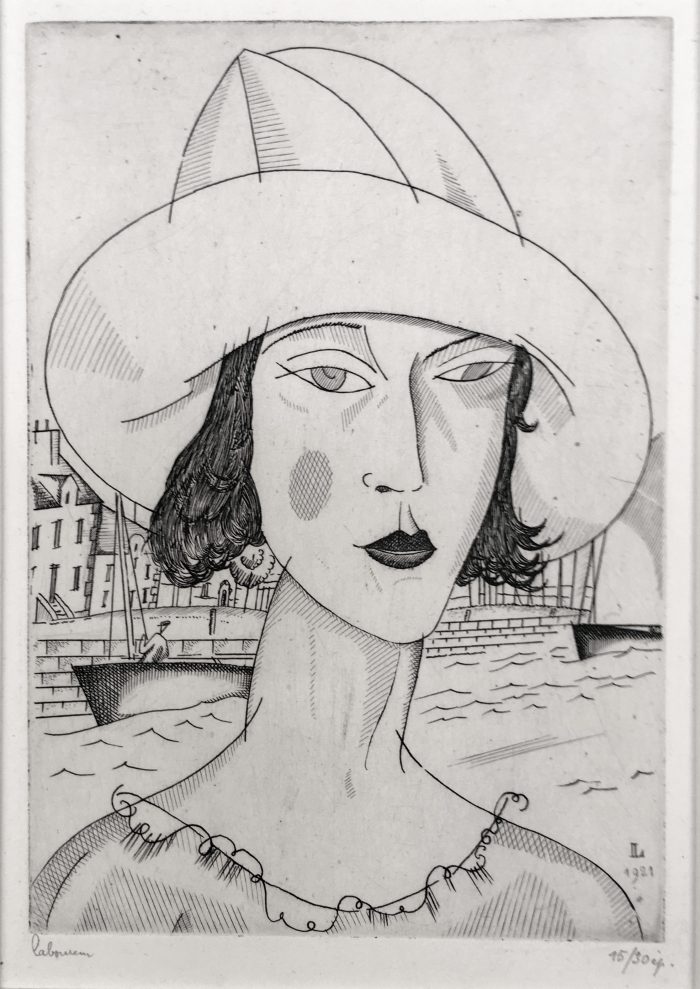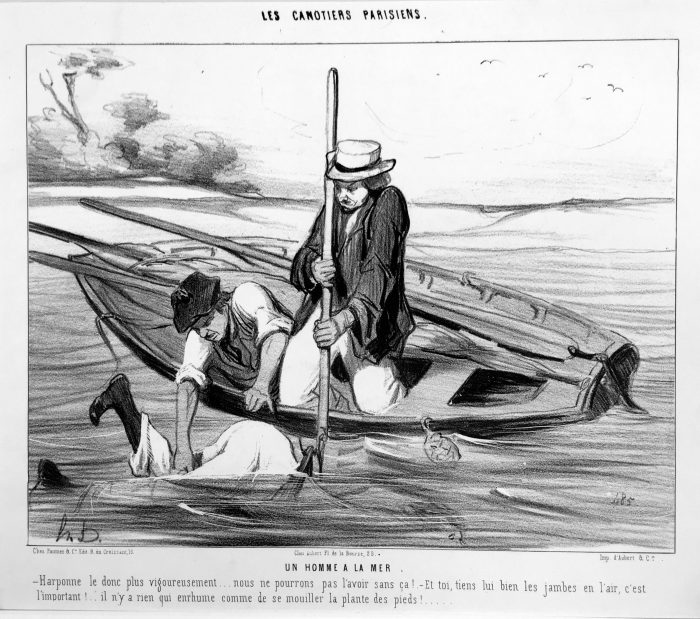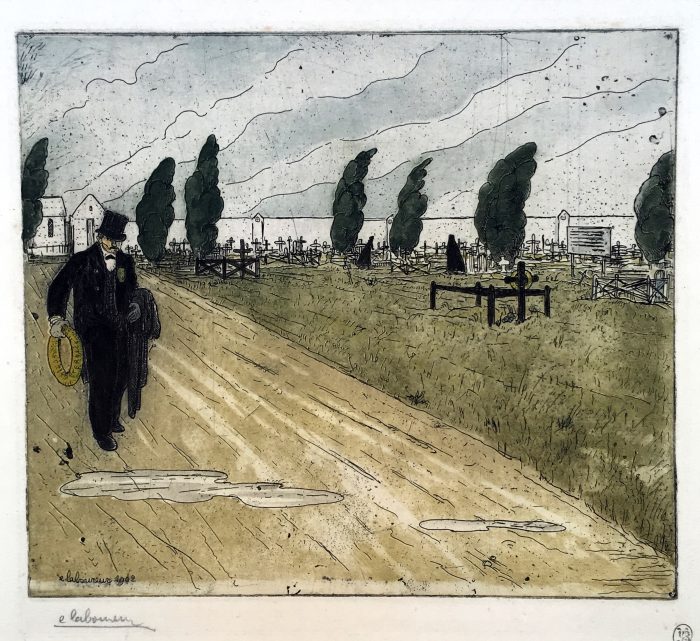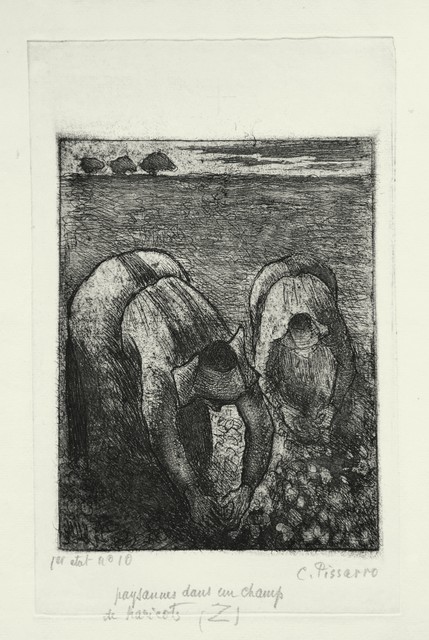Camille Pissarro (1830-1903), Paysannes Dans un Champ de Haricots, etching, aquatint, maniere grise; 1891, titled, signed, annotated 1er etat no. 10, also marked with a large Z by the artist in pencil. Reference: Delteil 103, only state. Delteil notes that there were 14 lifetime proofs (then 18 posthumous impressions). Printed on a cream laid paper, the image within the platemark: platemark size is 9 1/2 x 6 1/8, the image 6 7/8 x 5 1/4, the full sheet with deckle edges 16 3/4 x 11 3/4. In excellent condition.
A fine impression of this great rarity, printed personally by Pissarro with a delicate covering of platetone; there is also evidence of a special aquatinting process (manire grise which he invented with Degas (see below).
Although Pissarros annotation indicates that this was a first state, no later (or earlier) state is known. Also, although Delteil notes that there were 14 lifetime impressions, he accounts for only a few, at institutions (Muse du Luxembourg, Paris Bibliothque Nationale, Ashmolean Museum Oxford); this impression was acquired privately and we have not encountered lifetime impressions on the market in many decades.
Pissarro was perhaps the most active printmaker of the Impressionists; printmaking was an essential component of his career, and he was deeply involved in the process of creating and printing his prints.By mid-career Pissarro had made many etchings, using fairly conventional techniques (although of course aesthetically his work was hardly conventional), but it was Degas who introduced Pissarro to a range of unusual ways of working with the etching plate especially the use of aquatint. Among other innovations, they developed a variant of the aquatint technique called manire grise in which they scraped the plate with an emery point; that technique appears to have been used in this print.
Pissarro did not like professional printing of his etchings, and so he printed his plates himself (alsoDegas apparently printed many Pissarro proofs). The concept was not to produce a large edition of prints similar in appearance (only about 5 of Pissarro’s prints were in fact editioned during his lifetime); printmaking for Pissarro was a way of experimenting, achieving variations in light, mood, sensibility, with each proof. He did not intend to earn much money through printmaking (and he never did).
